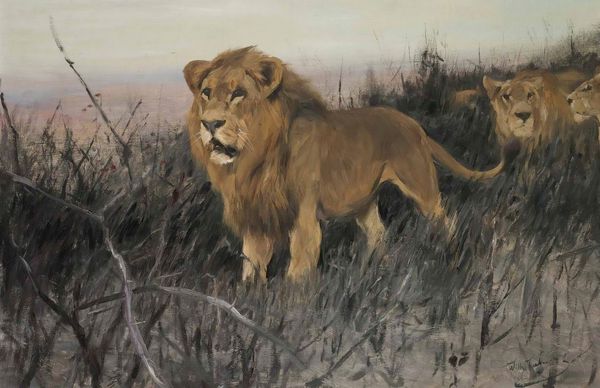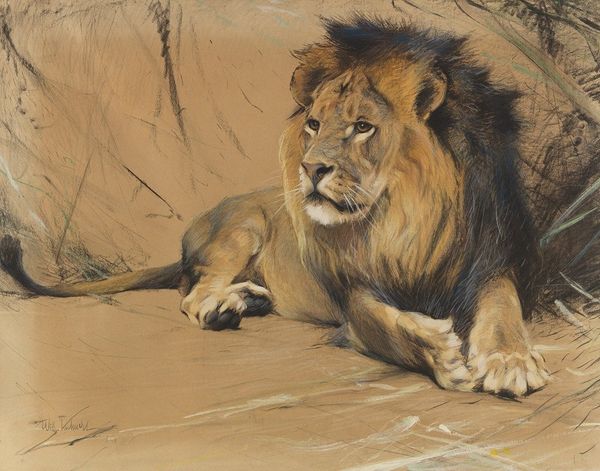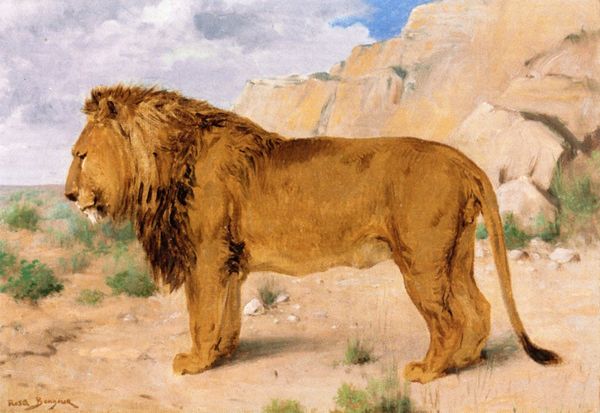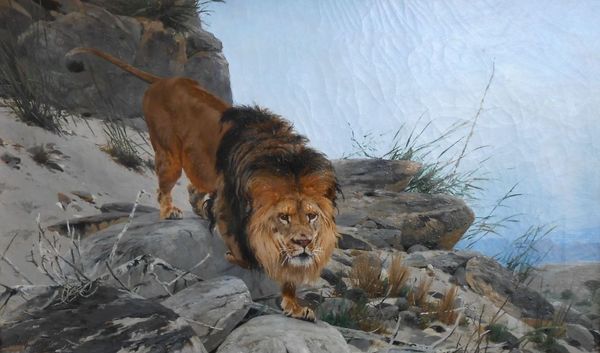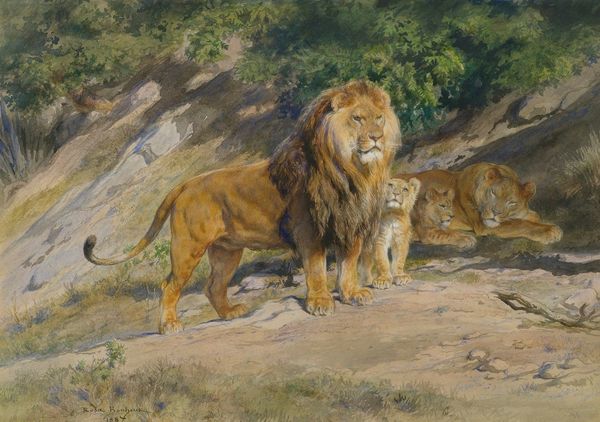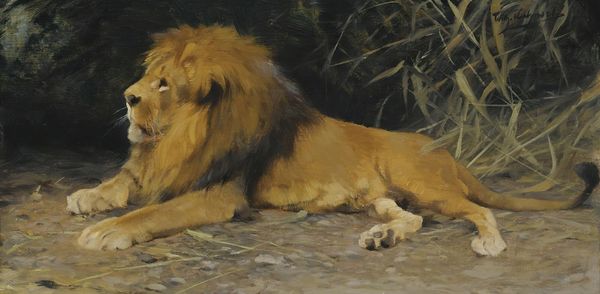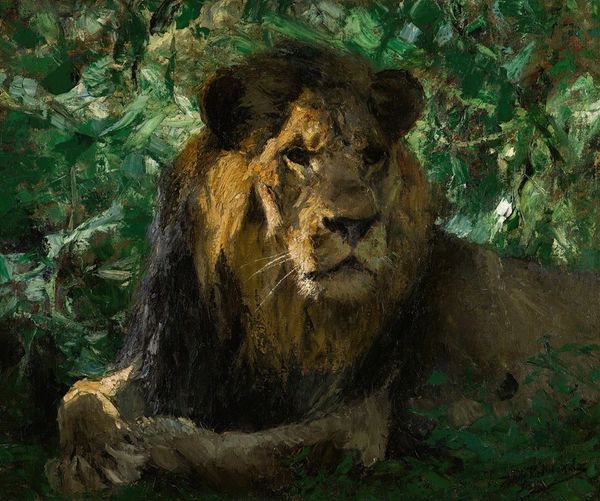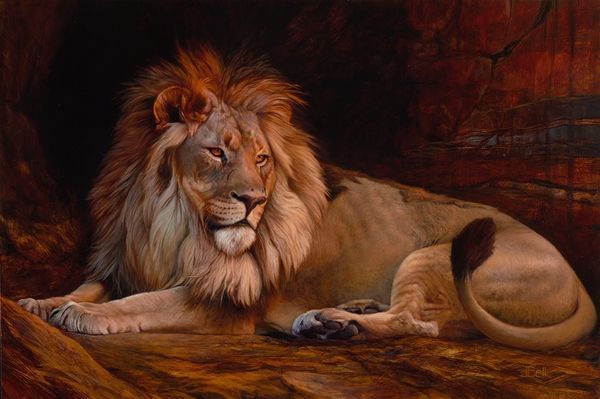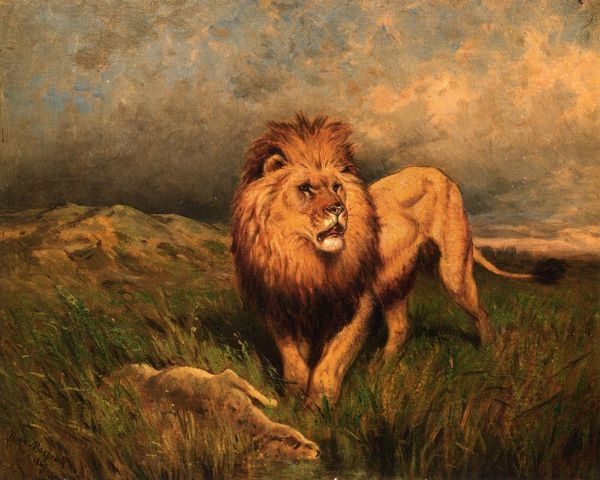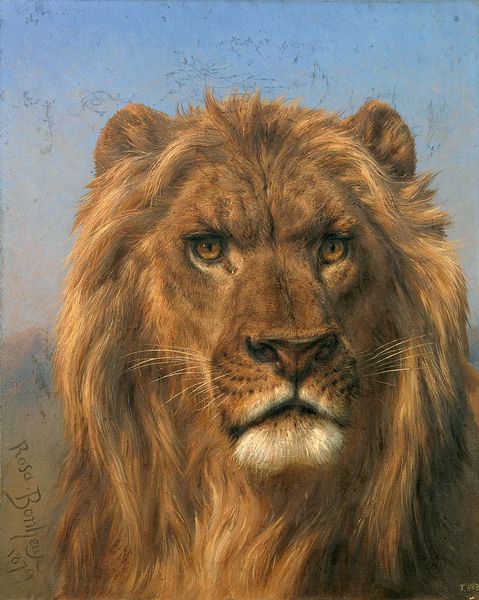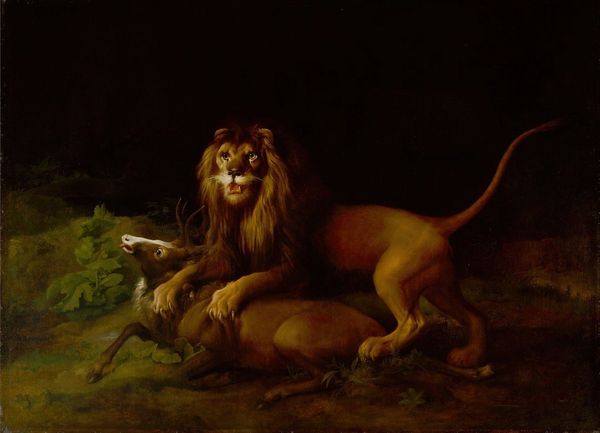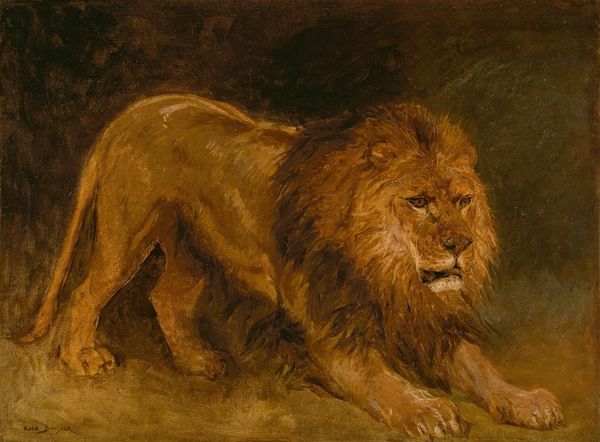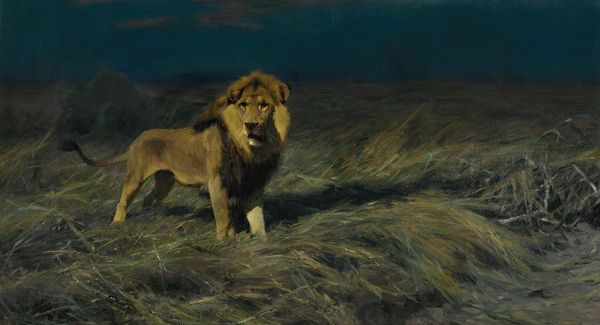
painting, plein-air, impasto
#
portrait
#
animal
#
painting
#
plein-air
#
landscape
#
nature
#
impasto
#
animal portrait
#
nature
#
realism
Copyright: Public Domain: Artvee
Curator: Standing before us is "Beberlöwe" by Wilhelm Kuhnert. While undated, it is consistent with his depictions of African wildlife painted during the late 19th and early 20th centuries. Editor: There's a definite presence to this work! The thick, almost sculptural application of paint in the lion's mane contrasts beautifully with the muted tones of the grasses, creating a striking visual texture. You can practically feel the wind. Curator: Absolutely. Kuhnert was well known for his commitment to painting en plein air. He actually traveled extensively in Africa, which at the time would involve significant resources, infrastructure and... colonialism. What we see isn't simply a lion, it’s a studied portrayal made possible by specific conditions. Editor: And it’s crucial to remember those colonial power dynamics when discussing the representation of the African landscape and its fauna! This wasn’t simply “nature.” The very act of traveling there, making these images… it’s all entangled with broader issues of access, ownership, and consumption of resources. What can you tell me about the impasto style the painting employs? Curator: He developed that technique through his academic art training in Berlin. His aim, likely, was realism – a life-like depiction. But viewed through a post-colonial lens, there is also an idealized portrayal of nature and dominance embedded within. It became part of a romantic view Europeans were crafting of other places and people. Editor: A controlled “realism," mass-produced as these images often were, fueling a public appetite for the "exotic" while obscuring the true cost – the exploitation inherent in securing these images and, indeed, the environments they depict. Considering all those implications makes the lion seem very small, cornered within its beautiful surroundings. Curator: Precisely. It gives one pause, doesn't it? This realistic portraiture serves a far bigger symbolic and historical purpose when considered alongside socio-political narratives. Editor: Well said. There's more than meets the eye here, as it's hard to detach the process and materiality from the politics it served and still implies. Curator: Indeed, by recognizing its intricate contextual weave, it offers us today new perspectives to ponder art, culture, and our world.
Comments
No comments
Be the first to comment and join the conversation on the ultimate creative platform.
